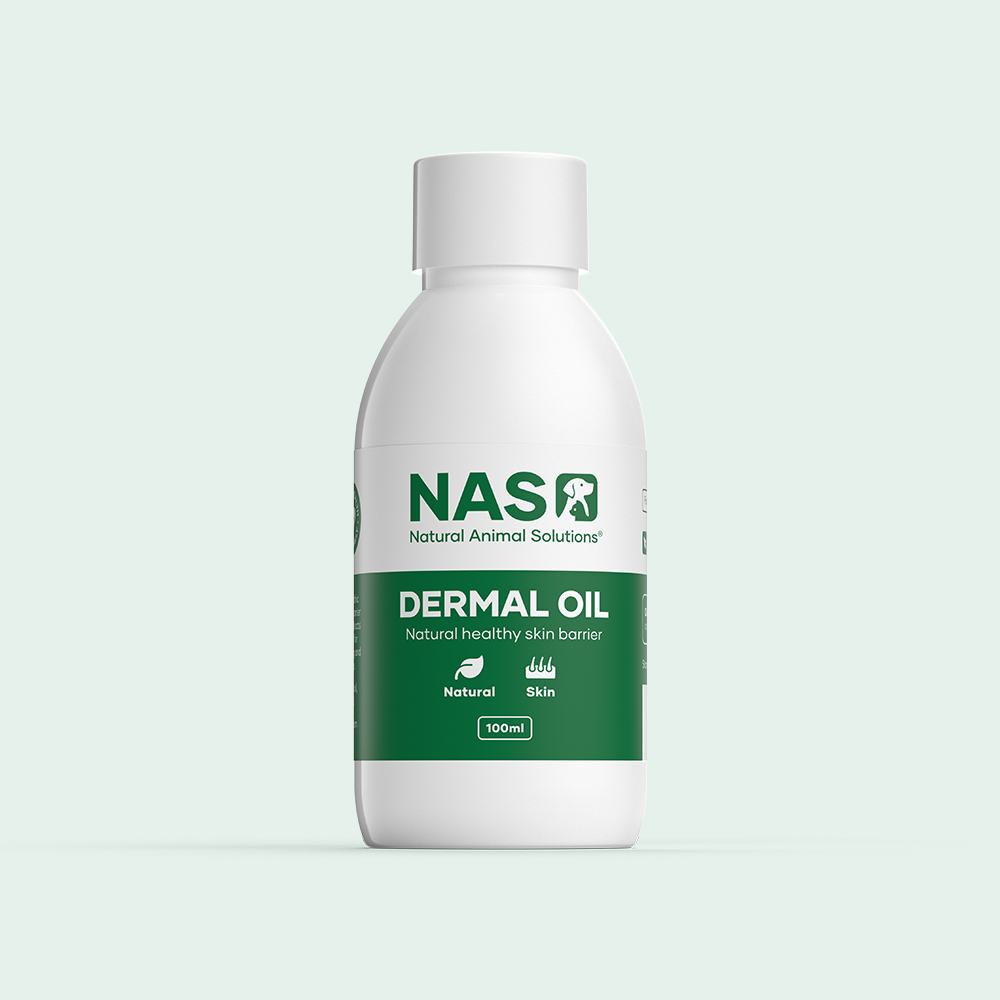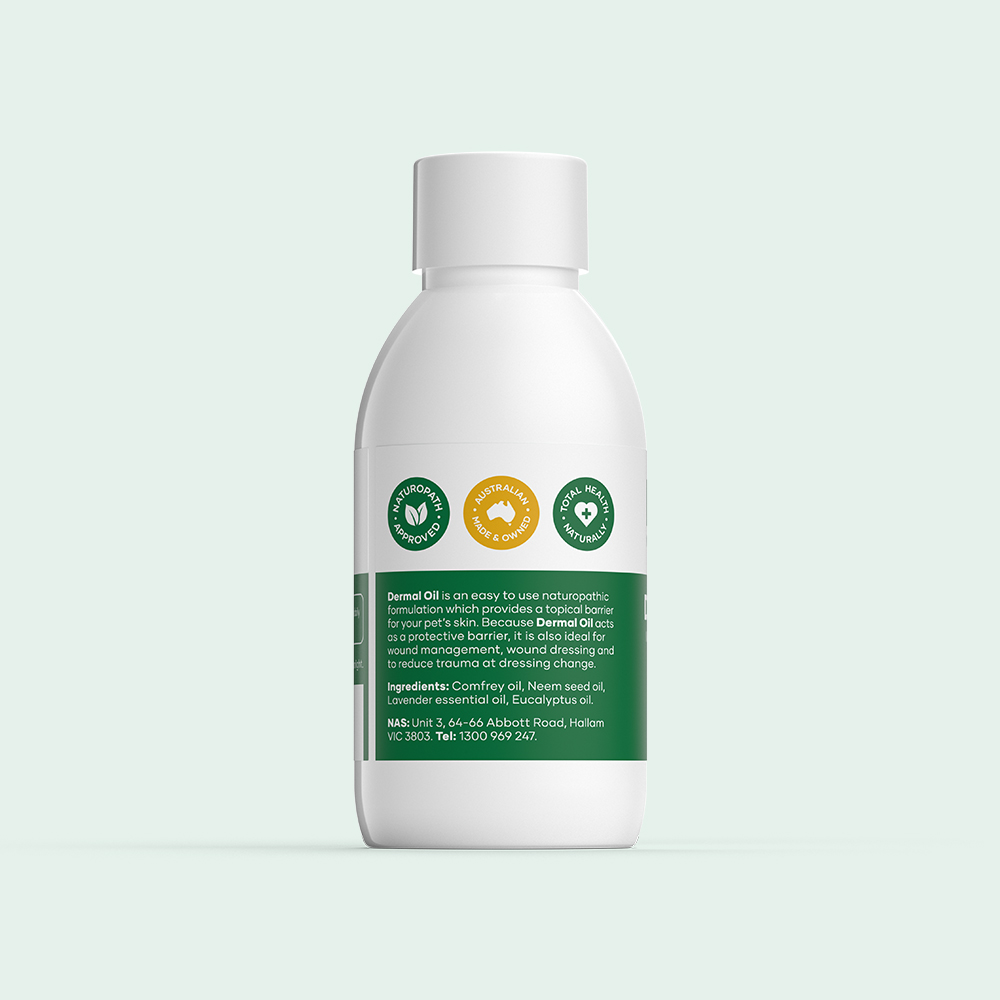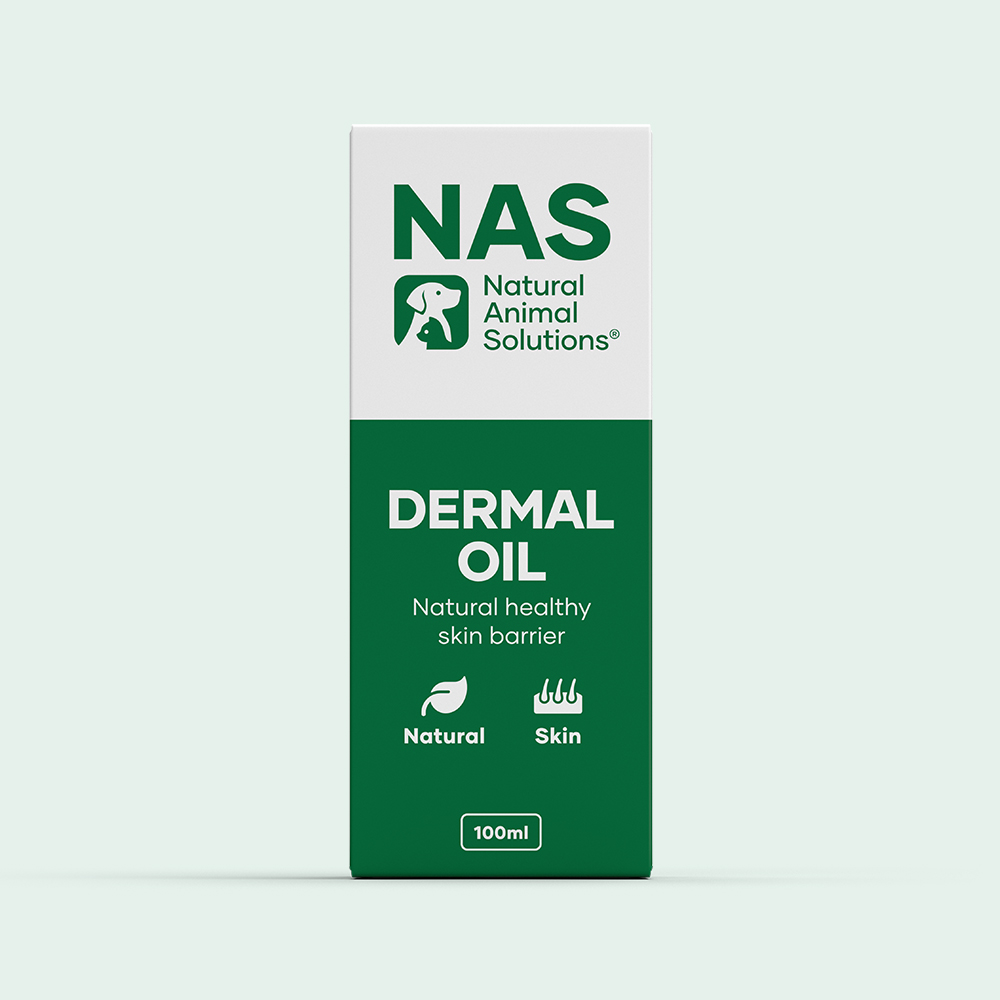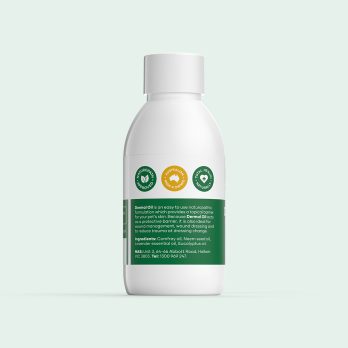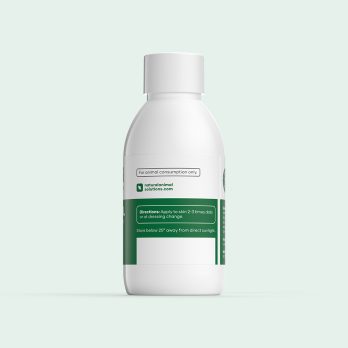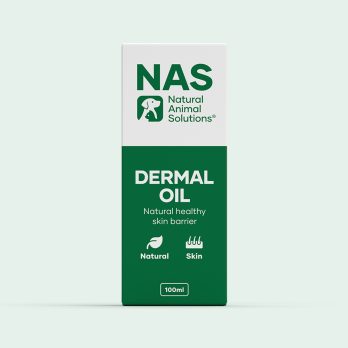Why use it?
- Pet Skin Protection: Dermal Oil offers a vital topical barrier for safeguarding your pet’s sensitive skin, defending against environmental contaminants like bacteria.
- Easy Application: Our user-friendly, naturopathic formula is simple to apply, ensuring hassle-free pet care.
- Versatile Wound Care: Ideal for managing minor wounds, cuts, and abrasions, providing comprehensive skin care for your pet.
- Trauma Reduction: By reducing pet trauma during dressing changes, it ensures a more comfortable healing process.
- Multi-Species Suitability: Suitable for dogs, cats, horses, and small animals of all ages, offering versatility for various pets.
- Nourishing Ingredients: Dermal Oil boasts a deeply nourishing blend of four essential ingredients, promoting skin health and overall well-being.
- Pet Health for Life: It supports lifelong pet health by preventing skin issues and irritation, maintaining your pet’s well-being over time.
Directions & Dosages
Apply to skin 2-3 times daily or at dressing change.
Store below 25° away from direct sunlight.
- Comfrey oil
- Neem seed oil
- Lavender essential oil
- Eucalyptus oil
Can I use this on all skin types?
Yes, Dermal Oil is very safe to use on all skin types, including noses, paws and tummies.
What is the difference between Dermal Cream and Dermal Oil?
Dermal Cream is a similar product but with a rich, creamy feel, while Dermal Oil is an oily substance. Dermal Cream is an excellent moisturising product for dry and damaged skin, while Dermal Oil is an effective product to nourish the skin and includes eucalyptus oil as a natural skin barrier.
Is it safe if my pet licks the oil off?
Yes, Dermal Oil is made from all natural ingredients and is completely safe if your pet licks it off their skin.
Can I use this on broken skin?
Yes, it is very safe to use on broken skin, cuts and grazes affecting the epidermis and dermis layers. The only time we recommend not using Dermal Oil on very deep wounds and gashes affecting the deeper hypodermis layers, which are made of body fat and connective tissue. These wounds generally need stitches and should heal more slowly than the top layers of the skin.

